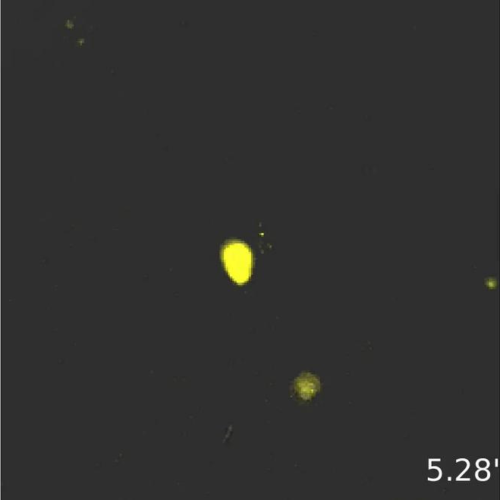by Andreas Fischer, Helmholtz Association of German Research Centres Workflow of establishing cell-type-specific aging clocks, sc-ImmuAging. Credit: Nature Aging (2025). DOI: 10.1038/s43587-025-00819-z Not only does our body change with age, but so does our immune system. A recent study led by the Center for Individualized Infection Medicine (CiiM) shows exactly how immune cells age and how infections and...
Tag: <span>Immune cells</span>
RORγt⁺ dendritic cells play both offense and defense: Versatile immune cell offers new therapeutic approaches
by Ludwig Maximilian University of Munich Single-cell multiomic profiling reveals the unique identity of RORγt+ DCs. Credit: Proceedings of the National Academy of Sciences (2025). DOI: 10.1073/pnas.2417308122 LMU researchers have shown that a particular type of immune cell acts more flexibly than previously thought—with the potential for new therapeutic approaches. As part of the innate immune system, dendritic...
Switching between defense and attack – immune cells with dual role
Peer-Reviewed Publication Ludwig-Maximilians-Universität München FacebookXLinkedInWeChatBlueskyMessageWhatsAppEmail LMU researchers have shown that a particular type of immune cell acts more flexibly than previously thought – with potential for new therapeutic approaches. As part of the innate immune system, dendritic cells are in the body’s first line of defense against infections. They detect pathogens and coordinate the immune...
How immune cells ‘sniff out’ pathogens: Signaling study could speed up the search for new drugs
by University of Bonn Optical biosensor decodes signaling of endosomal TLRs. Credit: Nature Communications (2024). DOI: 10.1038/s41467-024-53770-9 Immune cells are capable of detecting infections just like a sniffer dog, using special sensors known as Toll-like receptors, or TLRs for short. But what signals activate TLRs, and what is the relationship between the scale and nature of this activation...
Long COVID inflicts deep scars on the lungs. Targeting specific immune cells could reverse damage
September 4, 2024 by Harish Narasimhan, The Conversation Credit: Pixabay/CC0 Public DomainThe long-term effects of respiratory viral infections such as COVID-19 are a major public health burden. Some estimates suggest over 65 million people around the world suffer from long COVID-19. Efforts to better understand this condition, however, have been hampered by its ability to...
Gut microbiome found to influence location of immune cells
September 12, 2024 by Max Delbrück Center for Molecular Medicine Images of the colons of conventional (left) and germ free (right) mice showing how bacterial colonization affects the distribution of immune cells along the mouse intestine. CD45 immune cells are show in red, CD3 immune cells are shown in yellow. Immune cells are concentrated close...
Study uncovers key immune cells for combating aggressive Merkel cell carcinoma
July 26, 2024 by H. Lee Moffitt Cancer Center & Research Institute Credit: Pixabay/CC0 Public DomainMerkel cell carcinoma is a rare but highly aggressive form of skin cancer known for its rapid growth and tendency to metastasize. Despite the promise of immune checkpoint blockade therapy, which can boost the body’s immune response against cancer cells,...
Gene editing precisely repairs immune cells
by Max Delbrück Center for Molecular Medicine Mutated T cells are unable to kill B cells (red) induced by the Epstein-Barr virus. This causes other immune cells to flow into the area of infection, thereby blocking a blood vessel (center). Credit: Elijah D. Lowenstein and Xun Li, K. Rajewsky Lab, Max Delbrück CenterSome hereditary genetic defects...
Immune cells lose ‘killer instinct’ in cancerous tumors – but functionality can be re-awakened
First study tracking how NK cells respond to the tumour microenvironment in real time discovered that stimulating the IL-15 pathway prevented the rapid loss of function and improved tumor controlPeer-Reviewed Publication UNIVERSITY OF BIRMINGHAM Some immune cells in our bodies see their ‘killer instinct’ restricted after entering solid tumours, according to new research. In a...
When and how immune cells decide to form pathogen memories
During infection, reversible switch permits flexible formation of memory T cells, long-lived blood cells that can remember pathogen encounters and respond upon reinfection.Peer-Reviewed Publication UNIVERSITY OF WASHINGTON SCHOOL OF MEDICINE/UW MEDICINE THIS MOVIE SHOWS A SINGLE NAIVE CD8 T CELL. A TYPE OF WHITE BLOOD CELL INVOLVED IN IMMUNITY ACTIVATING IN RESPONSE TO STIMULATION THROUGH...





